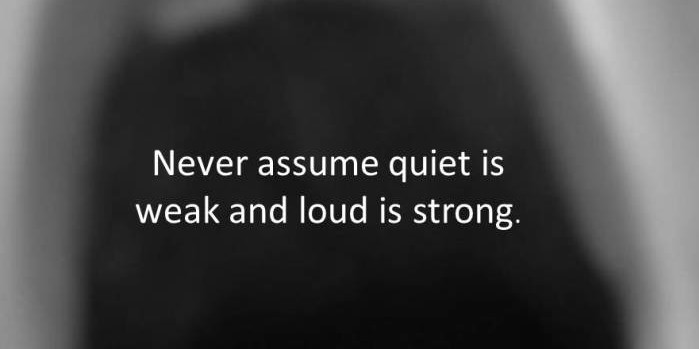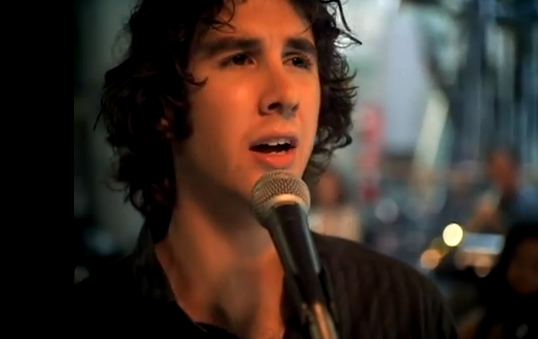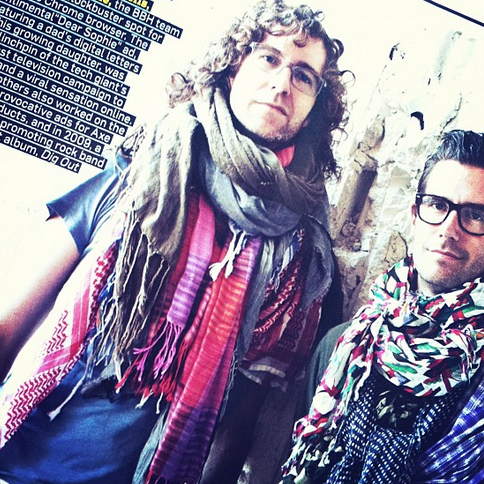Whenever we start looking to hire, I inevitably end up reflecting on my own interview experiences -- from both the interviewer and interviewee sides of the table. I've run the interview gamut, from extremely structured, multi-phase roundtables to loosey-goosey lunch chats. I've sweated (literally) and rambled and Miss America-ed and stumbled and, in retrospect, sent out my fair share of really awful cover letters. Despite all of this, I've managed to land some pretty amazing gigs over the years, and these days I find myself in the interviewer chair rather than the interviewee hot seat. I'm lucky.
With an unemployment rate of nearly 6 percent, millions of Americans are searching for jobs on any given day. A college degree is no longer a guarantee that you'll walk the stage, grab your diploma and transition seamlessly into the job of your dreams. Lately, it seems I've been seeing a lot of articles about the struggles millennials face when applying and interviewing for jobs. From CNBC:
Some of the biggest mistakes recent college graduates make involve interview preparation or lack thereof.
In an Adecco survey of hiring managers, 75 percent said millennials' biggest interview mistake was dressing inappropriately, and almost as many said they tended to mess up by posting inappropriate material on social media. Almost two-thirds of respondents said millennials tend to demonstrate a lack of research preparation for interviews. These hiring managers also said they were three times as likely to hire a worker over age 50 as a millennial.
One of the things I am frequently asked is how to land a job in the creative industry. For me it was a combination of personal connections, passion and serendipity. I was almost 28 years old by the time everything came together. In the event you'd like to seize the reins instead of waiting for fate and opportunity to show up at your door, here are some of my best bits of advice for those looking to land a job in the magic and mayhem that is the creative industry...
PHASE I: Scoring an Interview Prep work. Grunt work. Leg work. Whatever you call it, do it. Good things come to those who hustle, and in no place does that adage ring truer than in the creative industry. Competition is fierce and talent is rampant, but with a little (lottle) effort, you can make yourself stand out from the crowd. I'm not talking about the kind of hustle you ramp up a week before you submit a resume. Think of this as a long-term personal branding strategy -- and you're your most important client. This is your chance to polish yourself up and shine.
FOLLOW + ENGAGE Fun fact: You'd be amazed how many people proclaim their love and admiration for your agency -- then it turns out they aren't even following you on social media. Before you lay the flattery on thick, take the time to connect with the company and people you're hoping to interview with. Many of the positions that open up within the industry are filled with candidates pulled from our personal networks and connections (or referred from the networks of people we know and trust). It really is about who you know, so start connecting today. Comment on their posts. Retweet their content. Reach out and have a conversation. Trust me. We notice that kind of genuine and sustained engagement, and it makes you top-of-mind when a job opens up.
REVAMP UP YOUR RESUME Here's a little tip: if you are applying for a job in a creative industry, invest in creating a beautiful resume. Not only does that help you stand out in a pile of Microsoft Word templates, it shows that you have an eye for detail. (Which is always a good thing -- even if you're a copywriter!) For well under $50, you can tap into the collective talent of the interwebs and hook yourself up with a gorgeous template. (A few places to start: esty, Behance + Loft Resumes.)
CUSTOMIZE YOUR COVER LETTER Remember that old trick where you write a generic cover letter and just change up the name of the recipient and the job title using find-and-replace? Yeah. Don't do that. We notice. And it sucks. Cover letters are a necessary evil, but they're also a golden ticket. We get a lot of resumes -- a lot -- and a cover letter is an opportunity to stand out and let your personality shine through. Take the opportunity. Put the effort in. Look up the proper spelling of the person you're addressing. Forget you ever heard the phrase "Dear Sir or Madam." If you can't put in the effort to craft a compelling, custom cover letter, that sends the message that you're not going to put effort into anything else. And that's about the fastest way I know to find yourself in the thanks-but-no-thanks pile.
CLEAN UP YOUR SOCIAL PROFILE One of the best pieces of advice I ever received was passed down from my mother. Don't put anything in writing you wouldn't want your grandmother to read. (Lucky for me, my grandmother had an awesomely quick-witted sense of humor and a penchant for using the phrase "Oh, piffle!" when she really wanted to say, "Oh, sh...omething else!")
I grew up in the pre-social media era; a time when the worst thing young people had to worry about was having a teacher intercept the note you were passing during class. Shenanigans were documented on real film, and, for the most part, all evidence of our dumb, young lives was kept safe in the vaults of our memories and 20-pound photo albums. Social media has changed all of that. Everything you do, say and share is public these days, and each post you make represents your personal brand and who you are.
We were all young and wild at one time. We've all done silly things. (Some of us still do.) But the reality is that the things you do, say and share influence how other people perceive you. I implore you to consider this deeply when you share publicly. Before you apply for a job, run your social streams through the proverbial WWGS (What Would Grandma Say) filter. At the very least, know when to flip the privacy switch.
DON'T CONFUSE MISTAKE CRAZY FOR CREATIVE There is a fine line between making yourself stand out and coming off as a creeper. Creativity is always noted (think sending individual hand-designed thank you cards -- rather than a group email -- as an interview follow-up), but don't go overboard. You don't need to ship yourself to us in a wooden crate or pop out of a giant cake to impress us. Just bring your talent and truth to the table. Be yourself rather than trying to be the person you think we wish you were. There's a 99.99% chance we're gonna love the most authentic version of you.
INTERN One of my few regrets in life is not interning like crazy before I hit the point of no return (i.e. adult life + bills, bills bills...). Had I interned, it's possible I would have found my calling a lot sooner. So my advice to you is simple: if you're in a position where you can afford to work for minimal pay (or even no pay), do it. Seize every opportunity you can. If no opportunity exists, call people up and make one for yourself. Help them see how you can help them. Learn how to make a mean cup of coffee, then go in and work your knuckles off. Because every once in awhile (more often than you might think) that summer internship turns into the season of "our newest employee."
VOLUNTEER We often meet super eager candidates who lack the practical experience to land the job they're applying for. (A common struggle and catch-22 for recent grads trying to break into the creative world.) Newsflash: there are tons of organizations and nonprofits that need help with everything from event planning to social media management, but don't have a budget to pay professionals for it. Go volunteer your time and talent. When we see that kind of thing on your resume, not only does it add cred to your work experience, it demonstrates that you care about something bigger than yourself. Bonus: you get to help make a positive change in the world. Go you.
FIND A MENTOR Job openings come and go, but the relationships you build in between are lasting. So you found the agency of your dreams? Do some digging (and Twitter stalking). Figure out who holds the position you want, then launch a carrier pigeon, shoot them an email or give them a ring. Introduce yourself. Ask if you can take them to coffee or lunch (we love coffee and lunch!) -- then do it. Show up with a list of questions. Learn all you can. Then rinse and repeat. Start building your own mentor. You never know when a job will come up and that relationship will come in handy.
Phase II: Acing the Interview So the unthinkable has finally happened. Your resume fought its way to the top of the stack. You've stood out as a stellar candidate. You've just received the call. We'd like you to come in for an interview. What should you expect? What should you wear? What should you do? (I'm so glad you asked.)
DO YOUR HOMEWORK My biggest piece of advice when it comes to creative agency interviews is a huge cliche: DO YOUR DANG HOMEWORK. And I'm not talking about a quick scroll through the website. If the agency has published books, find them and read them. Dig through their client roster and case studies so you're prepare to cite specifics. Explore their culture, manifesto, philosophy and beliefs, then think about how those align with your own. Research competitors in order to get a feel for how they differentiate themselves within the industry. It may seem overwhelming, but so few people take the time to do really thoughtful, thorough background research, and this is exactly the kind of thing that will set you apart and above.
DRESS THE PART There's an old tidbit of wisdom that advises "dress for the job you want, not the job you have." It's so old I'm not even sure it's still going around. That advice gets a little tricky in an industry where jeans are a wardrobe staple and going barefoot is often the norm. (Creativity can't happen when your feet are stuck in a restrictive vortex!!) My advice is err on the side of fancier, rather than more casual. Dress like us, but nicer. (You can stop wearing shoes once you have the job.) Also, I'm sorry to be the bearer of bad news, but leggings do not qualify as real pants.
KNOW WHO YOU'RE TALKING TO One of the most impressive things I have experienced was an applicant who called our Office Manager to get the names and titles of each person she would be meeting with prior to her interview. When she arrived, she was able to reference my "adorable dog" by name (instant way to win my heart) and shared an anecdote about a city we had both recently traveled to. You can learn a lot about a person by taking a quick scroll through their social channels. We humans all like to feel important and special. I can't recall one other person we interviewed that day, but years later I still remember that applicant because she took five minutes to get to know me before she met me.
Smart answers = a good interview. Speaking to the shared interests between yourself and the company/employees = great interview.
COME PREPARED TO ANSWER QUESTIONS Confession: I find it more painful to be on the interviewer side of the table than the interviewee side. Something about the sympathetic pain of knowing what the interviewee is going through makes me feel clammy.
Agency interviews can be really strange. Much of the time it's like the Wild West, but instead of shooting bullets, everyone is shooting questions. I've heard everything from "What's the last book you read?" to "How many tennis balls do you estimate can fit in a standard school bus?" Weirdos aside, here's a short list I would be prepared to answer in some form or another when you take the hot seat:
- Why do you want to work here?
- What do you think you can bring to our team?
- What do you want to be doing 5 years from now? 10 years? 25 years?
- Tell us how your past work experience makes you uniquely qualified for this position?
- What is your philosophy about design/marketing/advertising/programming?
- What are your three best qualities?
- What are you worst three qualities?
- Why should we hire you?
- What work are you most proud of?
- What do you do for fun?
COME PREPARED WITH QUESTIONS If the last section didn't fill you with panic and dread, hooray. The good news is that you can (and should) keep tossing the hot potato back to your interviewers. Answer questions, then follow with a question of your own. Come prepared to assault us with an exhaustive list of questions, keeping in mind that you're not just trying to convince us to hire you. An interview is an opportunity for both sides to feel each other out and try each other on for size. When you ask really thoughtful questions, that tells us you’re not just trying to sell yourself -- you're trying to determine if we're something you really want to buy into. Here are a handful of questions I've asked and answered over the years:
- Who is/has been your favorite client and why?
- Who is your dream client?
- What kind of person thrives here? What type struggles?
- What made you decide to come work for X agency over all the others?
- If you had to boil the agency's core belief/mission down to a single statement, what would it be?
- What do you wish you had known about the agency/industry when you first started out?
- If your agency had three best friends, which brands would it hang out with?
- What has been the most meaningful day of your career at X?
- What has been the most challenging day of your career at X?
- How would you describe the X culture?
- Who are other brands and thought leaders that inspire X?
- Tell me about your favorite parts of living in CITY (if relocating)?
- How can I, in this role, most help you? (This is always a really interesting one as you'll likely get very different answers from an AE, Community Manager, Designer, Copywriter, Strategist and Admin.)
Phase III: Sealing the Deal Boom! You nailed it! Or at least you think you nailed it. Ohmygosh you really hope you nailed it. As the torturous decision-making wait begins, here are a few seal-the-deal moves you can sprinkle on the "PLEASE HIRE ME" cake...
FOLLOW UP RIGHT AWAY Assuming things have gone well in your interview, follow up within 48 hours to express your continued interest in the position. The best follow-up contact is personal. That means no generic, cc-all thank you. Take the time to send an email (or -- SUPER IMPRESSIVE -- a handwritten note) to each person you interviewed with. Bonus points for calling out something specific you learned from them during the interview. Follow ups needn't be long or gushy, just enough to let everyone know you're in if they'll have you.
KEEP IT QUIET Please refrain from posting about job interviews on social media before or after. It makes us feel weird and you come off as an oversharer. (And yes, we totally look to see what, if anything, you have posted.)
NEVER SAY GOODBYE In the wise words of Kenny Rogers, "You got to know when to hold 'em, know when to fold 'em." With all due respect to Kenny, don't fold 'em. In the event you don't land the job, resist the urge to fold. There have been many instances when an applicant we loved was beat out by another candidate by just a hair. Don't fall off the map. Don't slink off with your tail between your legs. Keep a conversation going with us. Stay on our radar. When you stay top-of-mind, you stay top-of-list.
Have questions about creative interviewing that I didn't answer in the post? Reach out using my contact form.






